Notre Dame de Paris, affectionately known as “Our Lady of Paris,” is more than just a magnificent religious edifice; it’s the spiritual heart and an enduring cultural symbol of France. Here, “Kilomètre Zéro” (Point Zero) marks the starting point of all roads and distances, affirming the cathedral’s central position in the heart of Paris and the entire nation. Notre Dame Cathedral is a living legend, constantly revealing new discoveries through the passage of time.
The History and Construction of Notre Dame Cathedral
Notre Dame Cathedral, the cathedral of the Archdiocese of Paris, majestically stands on Île de la Cité, a charming island in the middle of the romantic Seine River. This grand structure’s construction began in 1163 under the direction of Bishop Maurice de Sully, and it was largely completed by 1260. The centuries-long construction process witnessed the dedication and talent of generations of artisans:
- 1163-1182: Construction of the sanctuary and two aisles of the facade, laying the foundation for its grandeur.
- 1182-1190: Completion of the two bays, side aisles, and tribune, shaping the sacred space.
- 1190-1225: Building the exterior, two front bays, revealing the magnificent Gothic architectural beauty.
- 1225-1250: Construction of the upper aisles, two majestic bell towers, along with changes and expansions of windows, bringing light into the sacred space.
- 1350: Official completion, marking an era of architecture and culture.

Notre Dame Cathedral is a masterpiece of Gothic architecture, notable for its ribbed vaults, flying buttresses, rose windows, and colossal stained glass windows. The harmonious blend of naturalism and rich sculptural decoration created a unique distinction compared to earlier Romanesque structures. Gothic architecture, a style that flourished from the Middle Ages in Western Europe, uses pointed arches, emphasizing the logic and meaning of the arches.
Notre Dame Cathedral is not only an architectural work but also a symbol of French history and long-standing culture.
Historical Ups and Downs and Tragic Events
To become the famous cultural icon it is today, Notre Dame Cathedral has experienced its share of ups and downs. In the 1790s, the French Revolution turned the cathedral into a focal point of opposition, as many voiced criticism against it as a symbol of wealth and royal power. The climax of the conflict was when a mob stormed the cathedral, declaring it no longer in use and proceeding to loot and destroy relics, paintings, and valuable objects. As a result, 28 statues were beheaded, and much of the cathedral’s infrastructure was devastated. It wasn’t until Napoleon proclaimed himself Emperor and held his coronation ceremony there that the cathedral truly returned to “peace.” After the revolution ended, the cathedral stood tall, despite suffering severe damage.
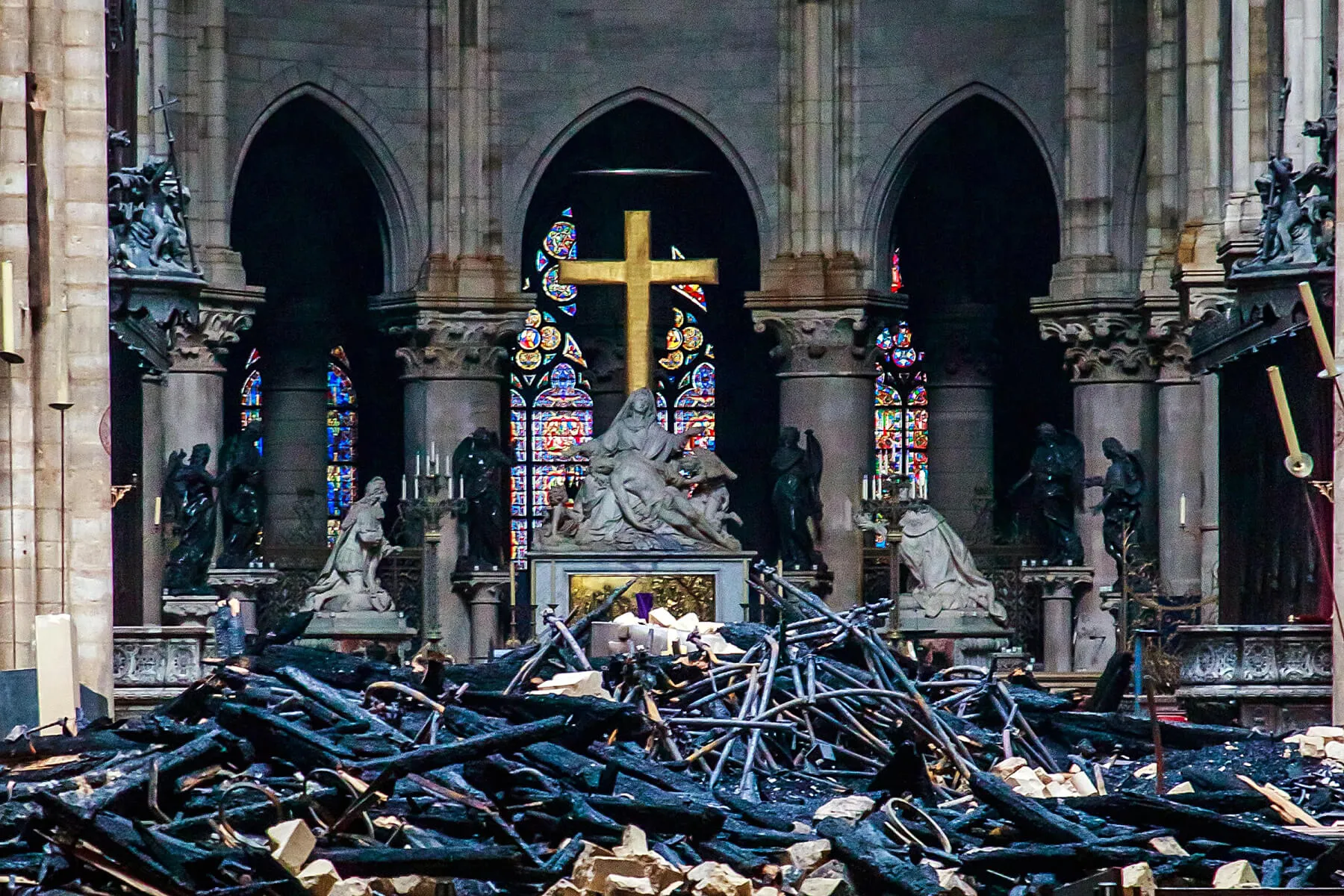
Unique Architecture: A Harmony Between Art and Religion
Notre Dame Cathedral is considered the first Gothic architectural work in France, embodying the most typical features of this style. So what contributed to the renowned glory of this structure?
Notre Dame Cathedral is 130 meters long, 48 meters wide, and 35 meters high, with a capacity of up to 6,500 people. Its floor plan is in the shape of a Latin cross, with the nave elevated, intersected, and the towers borrowed from 11th-century Romanesque architecture. The arched columns outside, known as “flying buttresses,” were not in the original design but were added when cracks appeared on the thin upper walls due to the weight of the vault. To solve this problem, over a dozen supports were built to counter the horizontal thrust of the central vault. The cathedral is also famous for its exterior statues and pinnacles arranged around it to support secondary columns and drainpipes.
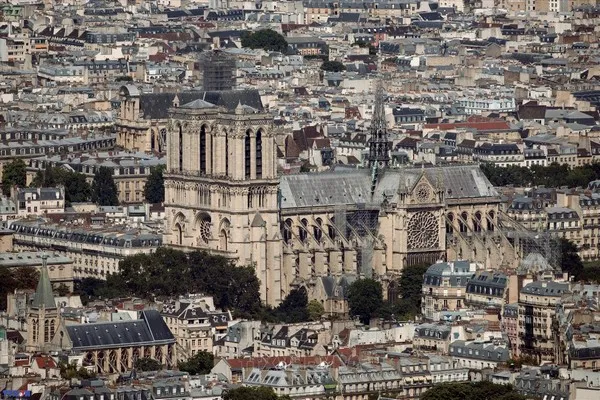
Notre Dame Cathedral is a testament to the main contributions of Gothic art to Christian architecture: the church soaring high with a sense of grandeur and magnificence, and the stained glass windows allowing for greater light reflection. On the stained glass windows are biblical images, adding to the artistic beauty of the cathedral. The wooden window frames of the cathedral’s nave were widened in the 13th century.
The rear facade of the cathedral is decorated with a stone sculpture block, especially around the central portal. The facade design balances the verticality of the twin towers (each 69 meters high) with the horizontal bands of decorated galleries, creating a simple yet powerful west elevation. The portals throughout the cathedral are also decorated with sculptural relief architecture, the south door featuring scenes from the life of St. Stephen along with other local saints, while the decorations around the north door depict the infancy of Christ and the story of St. Theophilus.
Notre Dame Cathedral is the center stage for important events in French history, such as royal coronations and weddings. The island on which the cathedral is built is also the last remaining natural island on the Seine River – Île de la Cité. The cathedral is located in the heart of Paris, where “all roads lead to the cathedral.” Today, a marker in front of the cathedral serves as “point zero,” signifying that the cathedral is truly the “heart” of the city of Paris.
Building Materials: A Combination of Nature and Art
The building materials of Notre Dame Cathedral are primarily limestone, wood, iron, and lead. The limestone used is Lutetian Limestone – the same type used to build the Palace of Versailles.
The quality of the wood used in the cathedral is truly astonishing, due to its durability, causing no small difficulty for the construction workers. Most of the cathedral’s roof is made of wood, but there has never been a case of insect infestation or weakening over time. Notably, in the 2019 fire, many wooden parts were completely undamaged, a miracle for researchers.
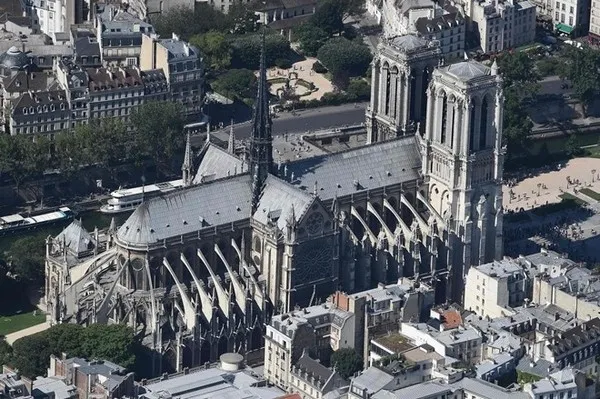
The limestone in the cathedral is mixed with iron particles to enhance and strengthen the stone blocks. Lead was mainly used on the roof, which is why the roof easily melted and collapsed in the 2019 fire.
Notre Dame Cathedral in Literature: “The Hunchback of Notre Dame”
Notre Dame Cathedral is not only an architectural symbol but also a source of inspiration for classic literary works. The most prominent is “The Hunchback of Notre Dame” by the great writer Victor Hugo, published in 1831. From its release, the work caused a great sensation, was widely loved around the world, and remains valuable to this day. The hunchback character in the story represents the Gothic architectural culture. The judgment and hatred of the people towards the hunchback mirror how Parisians at that time looked down on a characteristic feature of French culture. They could not see its beauty.
In the work, Victor Hugo had the hunchback hide in Notre Dame Cathedral as a strategic choice to increase people’s interest in the cathedral, because at that time, the cathedral was also in ruins, like other old Gothic buildings being demolished. When Hugo’s story became popular, people began to pay attention to repairing and renovating the cathedral. In the years 1844–1864, there was a lot of investment in restoring the cathedral, the spires and buttresses were renovated, and the Gargoyles were added to the cathedral, creating a unique and distinctive feature.
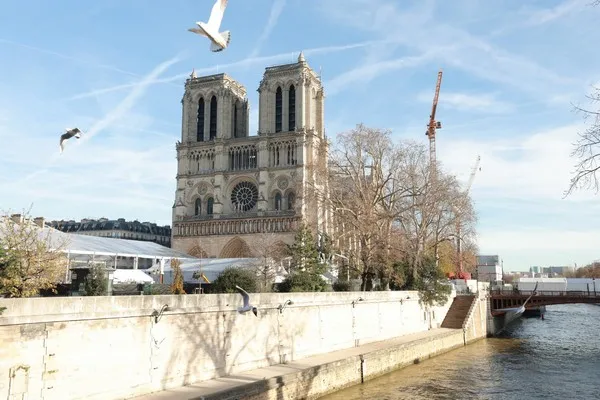
The 2019 Fire: Pain and Hope
In 2019, the whole world was shocked to hear that Notre Dame Cathedral in Paris was on fire, and most parts of the structure were destroyed. This was a great loss for the people of France and all of humanity. After the fire, much of the cathedral’s architecture was severely damaged because most of the materials were highly flammable.
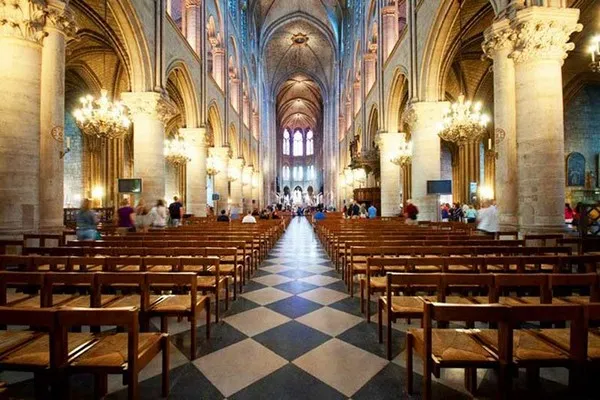
Efforts to rebuild the cathedral were then urgently implemented. French President Macron organized a design competition to restore the damage to the cathedral. However, there was much debate surrounding this issue. Some opinions argued that modern materials should not be used to recreate the historical beauty of the cathedral, while others believed that current materials would make the cathedral safer, avoiding unfortunate incidents. Current wood materials can be fire-resistant and more durable, and some old limestone quarries can be re-exploited to recreate the statues.
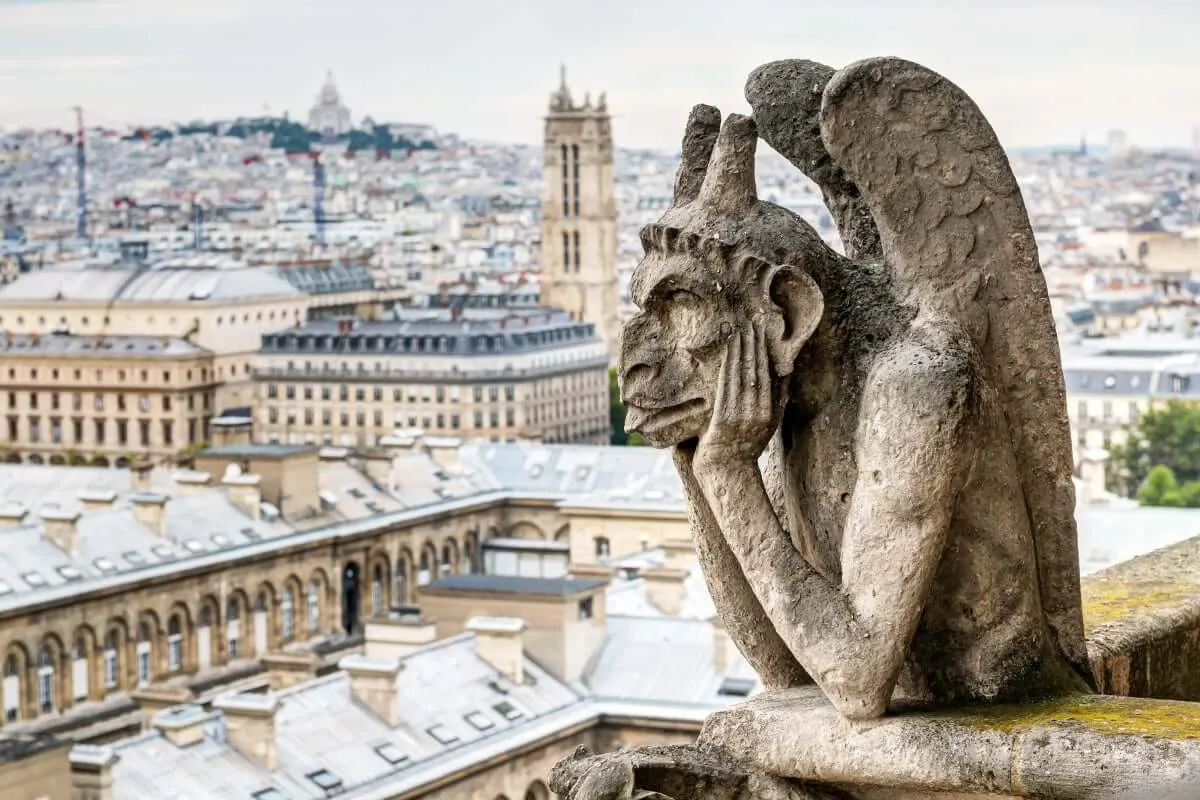
Significance for Future Generations: Preservation and Promotion
The story of Notre Dame Cathedral, from being destroyed, looted, then rebuilt, loved, hated, burned down, and then rebuilt again, shows that attention to preserving the past is extremely necessary. Cultural and historical values are priceless and need to be preserved because they are historical witnesses, having gone through many ups and downs. Cherishing the past and preserving historical sites is preserving the values of our ancestors for future generations, so that we and the future know that the world has had a glorious history of development. From there, we have a responsibility to preserve and promote those values.
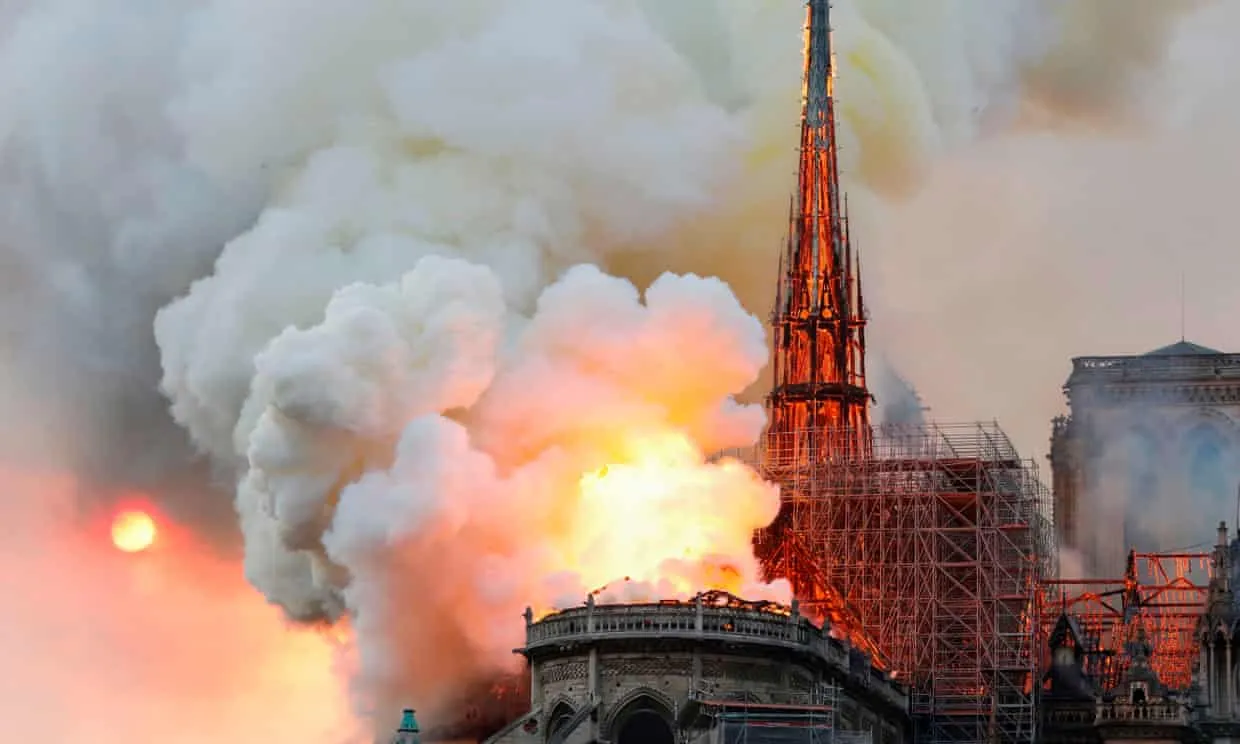
Notre Dame Cathedral is a famous cultural symbol of France, a source of pride and dignity for the French people and all of humanity. We have a responsibility to preserve this historical work well so that it continues to shine and inspire future generations.
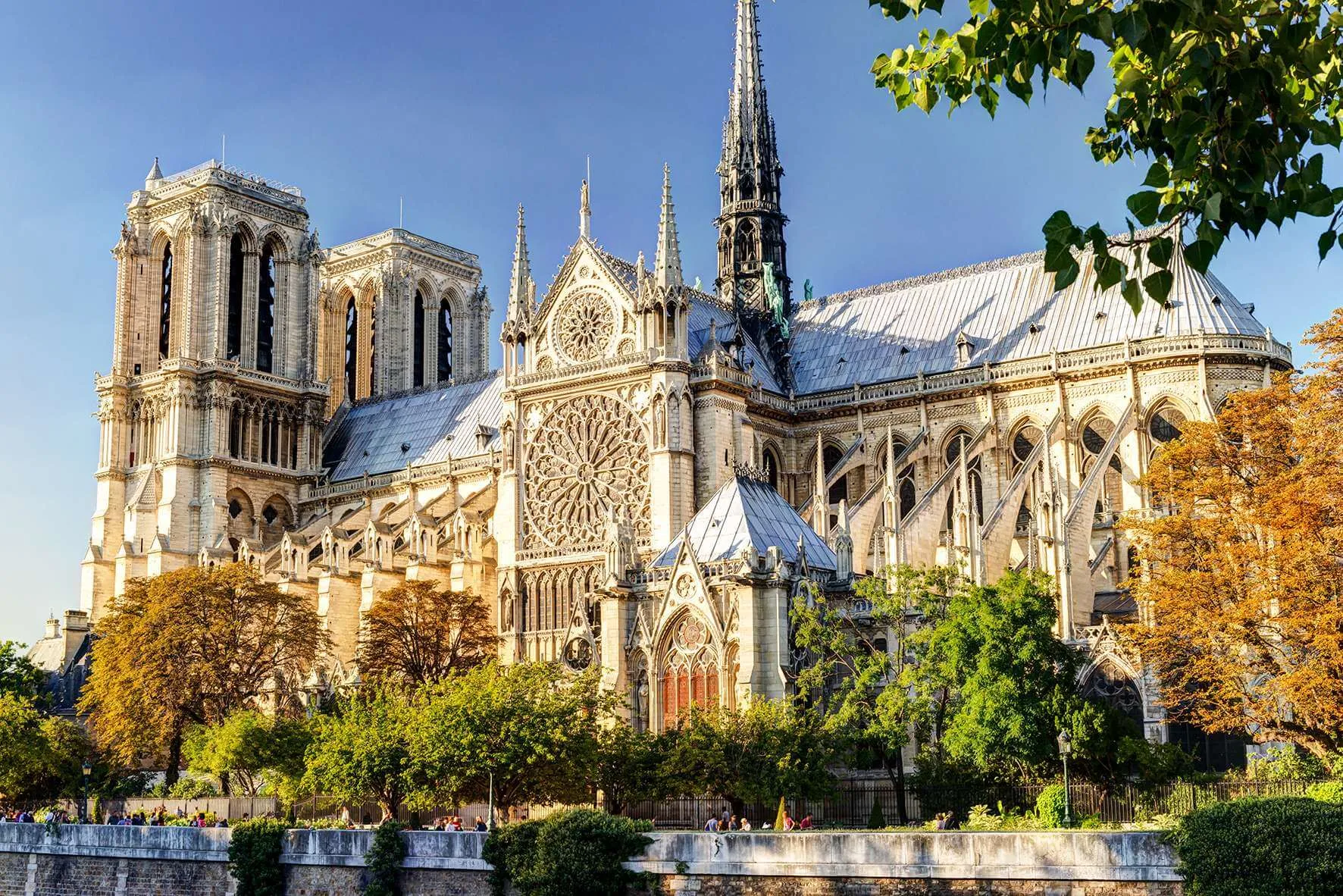
Notre Dame Cathedral is not just an architectural work but also a part of the soul of Paris, a symbol of France, and a heritage of the world. The restoration and reconstruction of the cathedral is not just about rebuilding a building, but also the rebirth of a symbol, a hope, and a reminder of the power of culture and history.